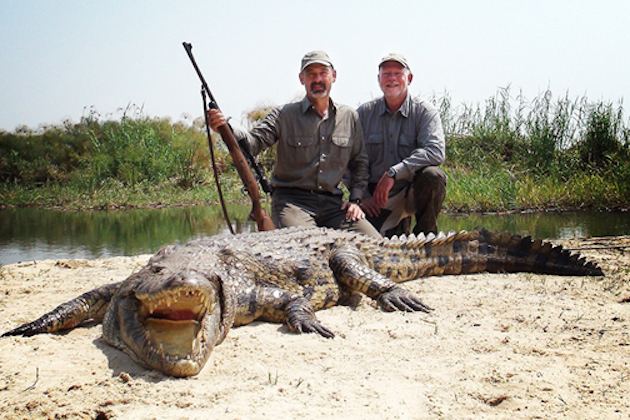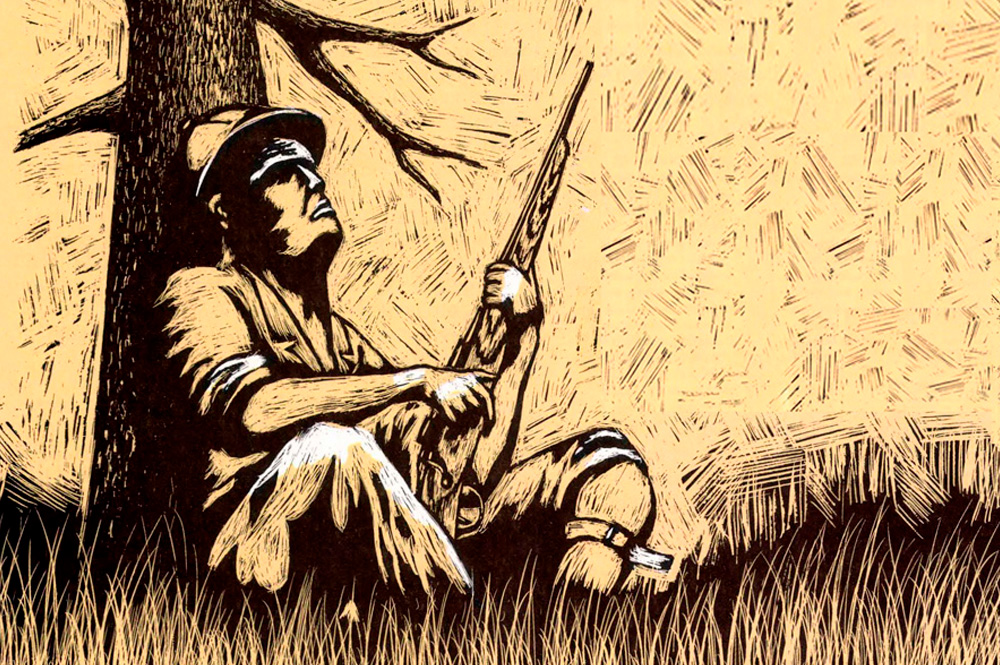The cold-blooded reality of a croc stands at odds with its deceptive appearance. These leviathans can live up to 100 years, grow to 20 feet and weigh 1,650 pounds. They are ambush predators that kill by lunging, grabbing a victim and biting down on it with a force of 5,000 pounds per square foot. They swim as fast as 22 miles per hour underwater, run nearly 9 miles per hour on land, spring nearly the length of their bodies off the ground, attack as many as 750 people a year (probably under-reported), and kill about 200.
I didn’t want to be one of them.
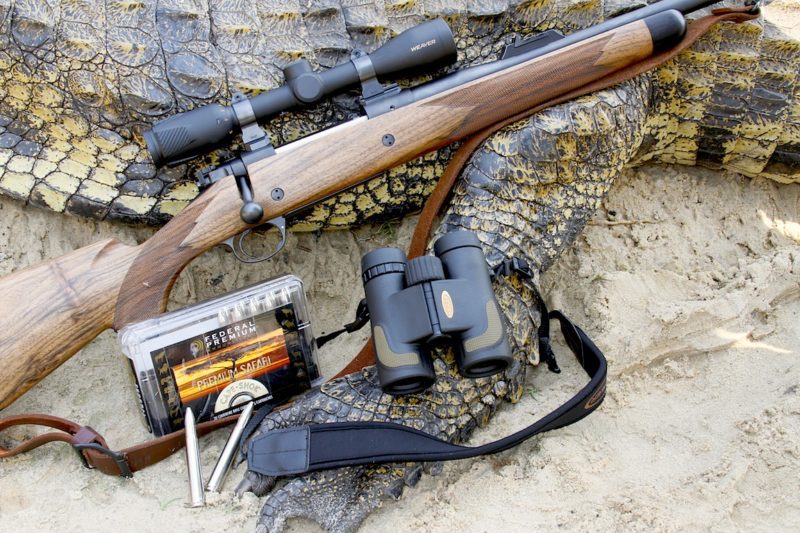
The gear used for crocodile hunting: Kimber Caprivi M8400 in .375 H&H Magnum; Weaver 8x32mm Grand Slam binocular; Weaver 2-8x36mm Grand Slam scope; Federal Premium Safari ammunition with 300-grain Trophy Bonded Bear Claw bullets.
“You might not want to lollygag too long at the edge of the river,” PH Dries Bronner warned. In an instant I realized what he meant: This was Africa. This was the Chobe River. This was Nile crocodile hunting territory.
We saw snouts as we slowly boated the river. As the days warmed we spotted the reptiles sunning on the banks and beaches, but we never found the dragon monsters you see on videos, the giants that attack wildebeests in the Masai Mara.
“Too many villagers and tourists around here,” Dries conjectured, waving toward two anglers casting for tigerfish from a guide’s small boat. “They don’t like to keep giant crocs in the neighborhood.”
The locals fear for more than their lives. They fear for their livelihoods, for the hundreds of cattle they herd in the drying floodplains of the Chobe and Zambezi Rivers here at the eastern tip of Namibia’s Caprivi Strip. A ten-foot croc isn’t much of a threat to a full-grown cow, but larger ones can be. Safari hunters pay handsomely for the chance to keep the ten-footers from enlarging to become cattle-killers.
“A ten-footer can still take out a full-grown man or woman,” Dries explained. “Even a smaller one is nothing to fool with.”
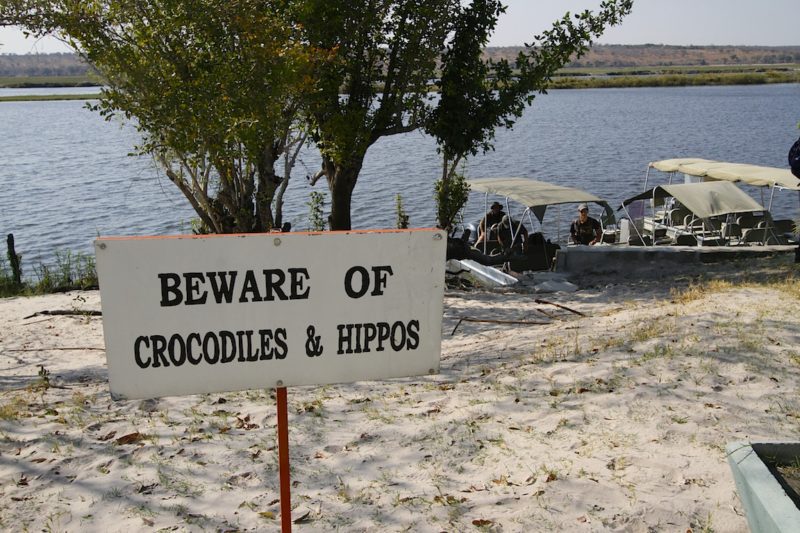
After several days of hunting the banks, river and backwaters, we floated round a bend to catch a good croc sunning atop crushed reeds on a riverbank. The boat glided to a stop against a sandbar. I was surprised to find the scope reticle rock steady on the croc’s neck, a bigger target than the golf-ball-sized brain.
“Take him if you feel good about the shot,” Dries whispered.
I did, so I did, and the reptile did just what we wanted—nothing. It did not leap into the water. It did not thrash and fall into the current, where it would have sunk. The 300-grain Trophy Bonded Bear Claw sent 80 yards downrange by my .375 H&H Kimber Caprivi rifle had broken its neck. The perfect conclusion to my crocodile hunting experience.
For more from Ron Spomer, check out his website Ron Spomer Outdoors, and be sure to subscribe to Sporting Classics magazine for his rifles column and features.
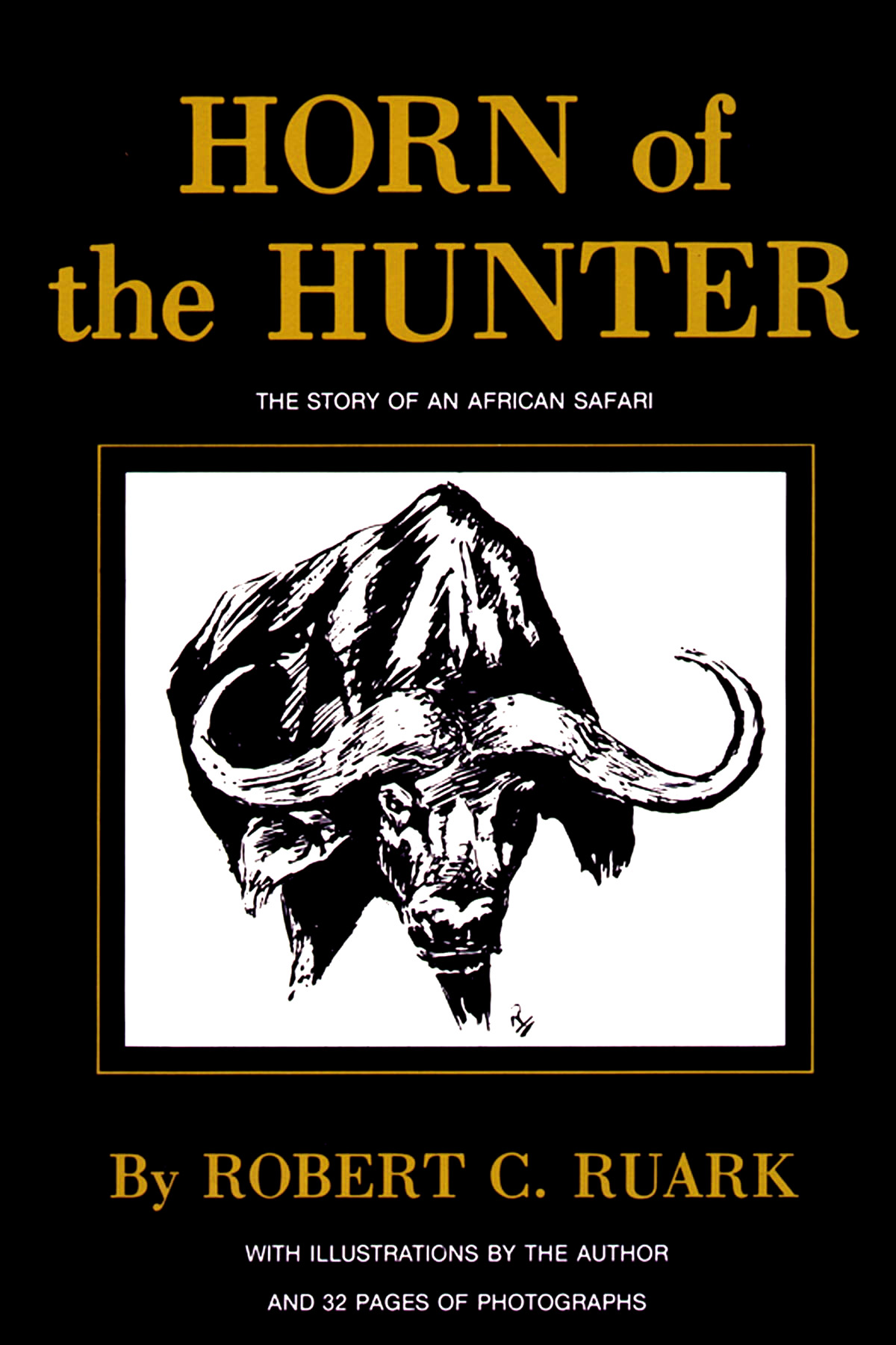 The horn of the hunter sounded early for for Robert Ruark, and its clean, stirring note finally drew him to the land every hunter longs to see—Africa. There, in the jungles and on the endless plains, Ruark came to know the self-imposed discipline of mile after mile of man-killing treks, the ferocity of the wounded buffalo, and the acid sweat of fear.
The horn of the hunter sounded early for for Robert Ruark, and its clean, stirring note finally drew him to the land every hunter longs to see—Africa. There, in the jungles and on the endless plains, Ruark came to know the self-imposed discipline of mile after mile of man-killing treks, the ferocity of the wounded buffalo, and the acid sweat of fear.
Robert Ruark’s safari started in Nairobi, where he and his wife, Virginia, hired Harry Selby, one of the best professional hunters in the business. With him came a group of native runners and bearers, a jeep, and a broken-down lorry. Their first campsite was on a grassy knoll overlooking the Grumeti River, where they pitched their tents beneath big thorn acacias, and it was there that Ruark was to meet and conquer his first two lions and his record-breaking buffalo. It was there, too, that Ruark came to love and understand the hideously grinning, carrion-eating hyenas—fisi, the natives laughingly called them. As they laughed, the natives remembered the times fasi had attackted them, asleep, and tried to eat their faces. Ruark came also to know and understand the land in which they hunted. Everywhere they looked there was life… and wherever there was life there was the threat of death. Shop Now

